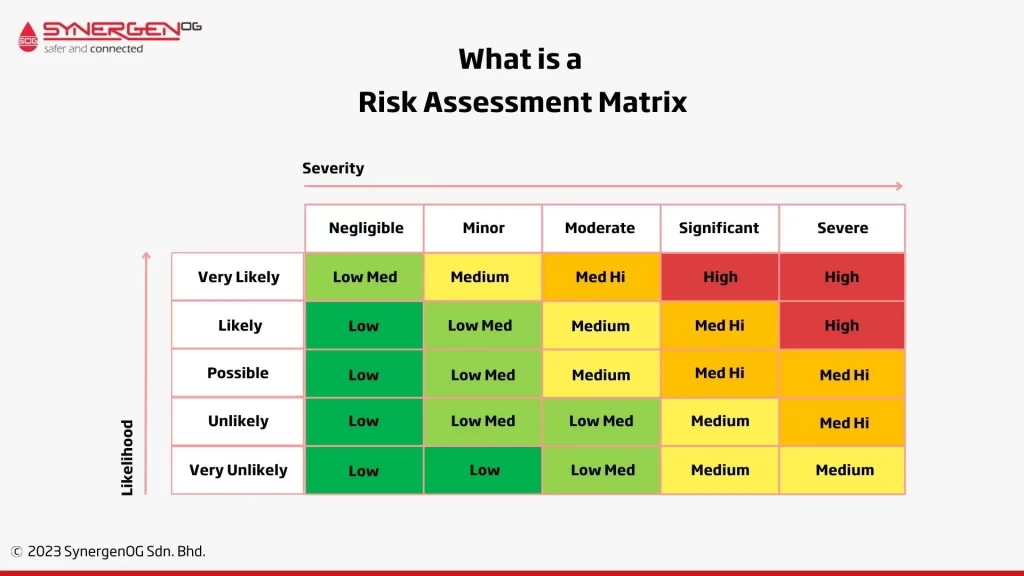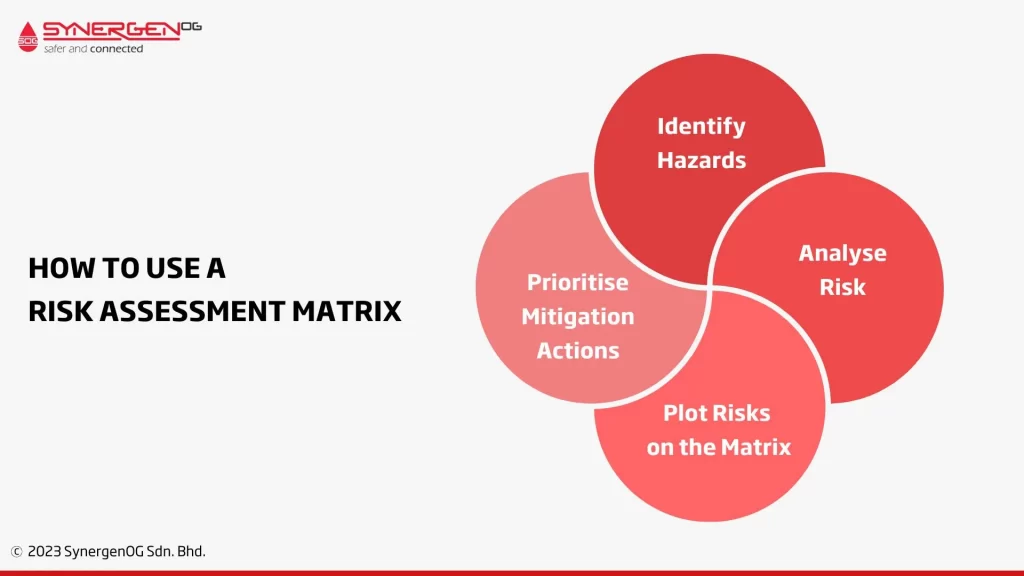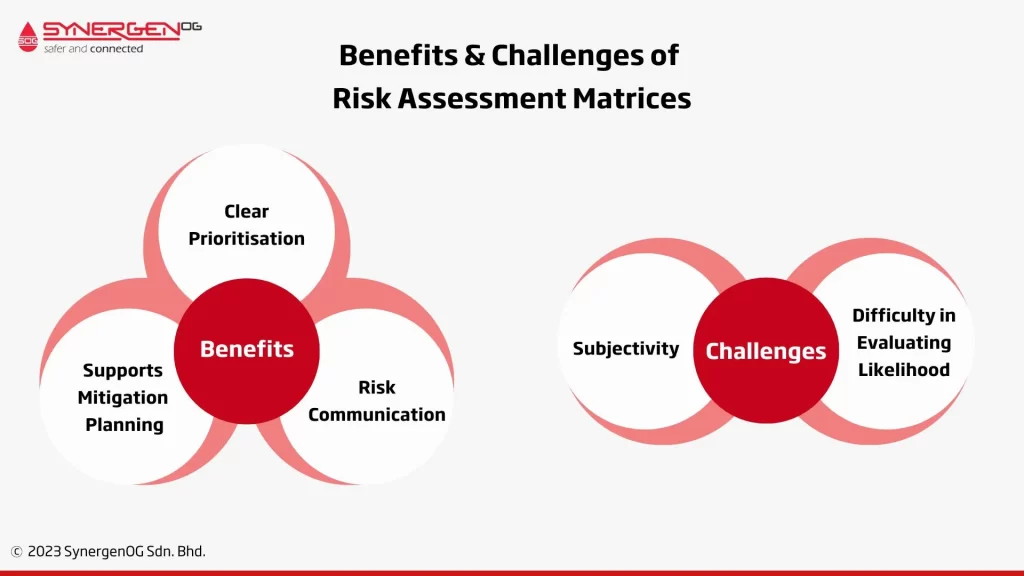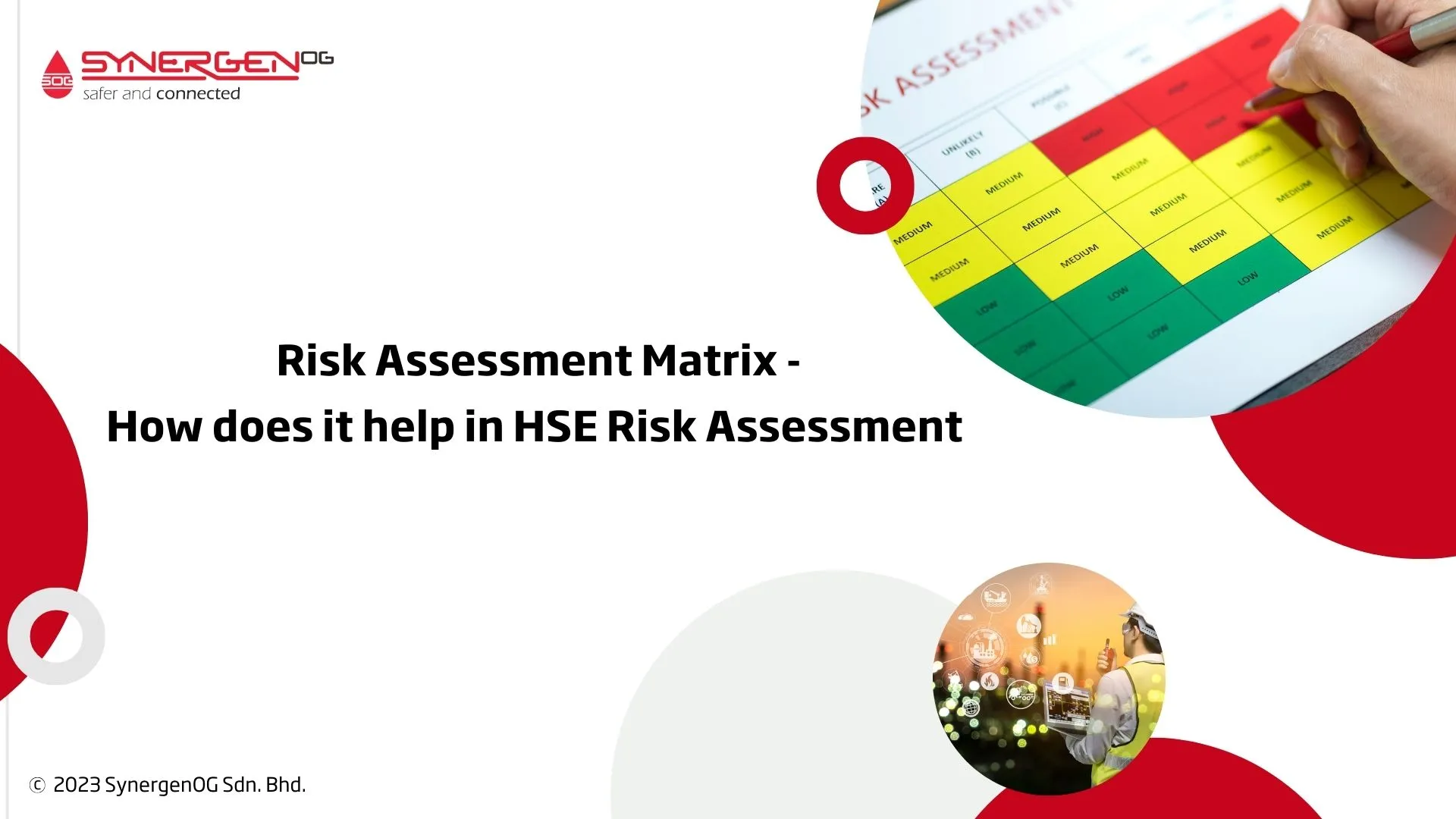| Summary: What is a risk assessment matrix (RAM), and what is the role of RAM in HSE risk assessment practices?Despite challenges, the benefits of risk assessment matrices in supporting robust HSE risk management make them invaluable tools for organisations across industries. |
Managing health, safety, and environmental (HSE) risks is paramount in various industries. The well-being of workers, protection of the environment, and overall reputation of organisations rely on effective HSE risk management. One essential aspect of this process is conducting risk assessments.
The Risk Assessment Process
The risk assessment process systematically identifies, analyses, and evaluates risks associated with specific tasks, operations, or projects. It involves several key steps that ensure a thorough understanding of hazards and their potential impacts. These steps include:
- Hazard Identification: Identifying potential hazards that could cause harm or damage in the workplace, such as chemicals, machinery, or ergonomic issues. This step requires a comprehensive examination of work activities and conditions.
- Risk Analysis: Assessing and quantifying the likelihood of a hazard occurring and the potential severity of its consequences. This analysis helps prioritise risks based on their level of significance.
- Risk Evaluation: Making informed decisions about whether the identified risks are acceptable or require further action. This step considers legal requirements, industry standards, and organisational policies.
What is a Risk Assessment Matrix

Risk assessment matrices (RAMs) are valuable tools for visualising and prioritising risks. RAM is considered a best practice for risk assessment. These matrices typically consist of a grid with two axes: the likelihood of an event occurring and the severity of its consequences.
The likelihood axis ranges from low to high, while the severity axis ranges from minor to catastrophic. By plotting risks on the matrix, organisations can quickly identify high-priority risks that require immediate attention.
RAMs provide a structured framework for assessing risks, enabling organisations to focus resources on the most significant hazards to make it As Low As Reasonably Practical (ALARP).
RAM facilitates consistent risk evaluation, promotes stakeholder communication, and enhances decision-making based on a shared understanding of risks.
How to Use a Risk Assessment Matrix

To effectively use a risk assessment matrix, organisations should follow a structured approach:
- Identify Hazards: Identify all potential hazards related to the task or operation being assessed. This could involve conducting workplace inspections, reviewing incident reports, or consulting subject matter experts.
- Analyse Risks: Evaluate each hazard by assessing the likelihood of its occurrence and the severity of its consequences. This analysis can be based on historical data, expert judgment, or industry standards.
- Plot Risks on the Matrix: Evaluate each identified risk according to the determined criteria of likelihood and impact. Assign a rating to each risk based on these factors, such as high, moderate, or low. Plot each risk on the risk assessment matrix using the determined likelihood and severity ratings. This graphical representation helps visualise the relative significance of different risks.
- Prioritise Mitigation Actions: Based on the placement of risks on the matrix, prioritise mitigation actions accordingly. High-risk items requiring immediate attention should be addressed first, followed by medium and low-risk items.
By following these steps, organisations can utilise risk assessment matrices as practical decision-making tools to prioritise and address risks effectively.
Benefits and Challenges of Risk Assessment Matrices

Risk assessment matrices offer several benefits in HSE risk management:
Clear Prioritisation: RAMs help identify and prioritise risks, ensuring that efforts and resources are focused on the most critical areas.
Risk Communication: Visual representation of risks on the matrix facilitates effective stakeholder communication, helping everyone understand the risks involved.
Supports Mitigation Planning: By categorising risks based on likelihood and severity, RAMs enable organisations to develop appropriate mitigation strategies.
However, there are challenges associated with risk assessment matrices, including:
Subjectivity: Determining likelihood and severity ratings may involve subjective judgments, leading to inconsistent results.
Difficulty in Evaluating Likelihood: Estimating the likelihood of certain events can be challenging, especially for rare or unpredictable incidents.
Organisations must know these challenges and implement best practices to overcome them.
Best Practices for Risk Assessment Matrices
To maximise the effectiveness of risk assessment matrices, organisations should consider the following best practices:
- Regular Updates: Risk assessments should be reviewed and updated periodically to account for any changes in the workplace, operations, or regulatory environment.
- Involvement of Workers: Engaging workers at all levels in the risk assessment process promotes a sense of ownership and leads to more accurate and comprehensive assessments.
- Training and Guidance: Providing training and clear guidance on how to use RAMs ensures consistency and accuracy in risk evaluations.
- Integration with Incident Management: Linking risk assessments with incident management systems allows organisations to assess the effectiveness of existing controls and identify areas for improvement.
- Continuous Improvement: Establishing a culture of continuous improvement ensures that risk assessment processes evolve with changing circumstances, allowing organisations to proactively manage risks effectively.
Conclusion
Effective use of risk assessment matrices is essential in managing HSE risks. Organisations can prioritise actions, allocate resources efficiently, and create safer work environments by following a structured risk assessment process, utilising RAMs, and integrating them into safety management systems. Despite challenges, the benefits of risk assessment matrices in supporting robust HSE risk management make them invaluable tools for organisations across industries.
Ready to Lower the Likelihood of Risks?
Get in touch with SynergenOG – Your Risk Assessment Partner.


[…] key tool in this phase is the Risk Assessment Matrix, which visually represents risks in a matrix format with likelihood on one axis and impact on the […]
[…] Risk Matrix: This method assigns probability and severity scores to various hazards or scenarios and plots them on a matrix to prioritize risks. The matrix helps visualize and prioritize risks, guiding the development of mitigation strategies. […]